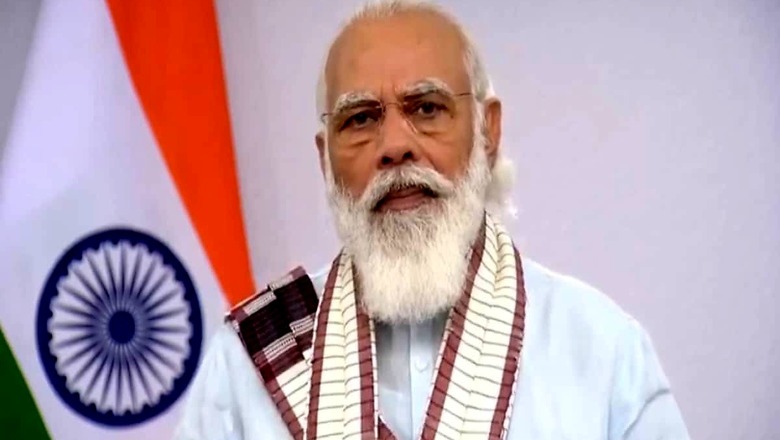
views
A river can erode the biggest boulder in its path, but it does not stop or wait for the erosion. It flows around the rock. Over time, the boulder breaks down and disintegrates as dust to flow with the river. Reforms have to be like a river: they have to flow around the obstacles, they cannot stop because of them. The best time for reforms is a crisis.
Prime Minister Narendra Modi understands that crisis is the best time to reform systems and has pushed several administrative, legislative and process reforms in the past six months. State leaders who recognise this opportunity are following it. The Manohar Lal Khattar government in Haryana is trying to improve governance by restructuring and reforming the administrative setup.
On September 30, 2020, Vijai Vardhan took over as the new chief secretary in Haryana, and last week the chief minister reorganised the administrative structure in his office. These changes may not attract attention, but they are part of process reforms needed to improve efficiency. Even on the governance index, Haryana is slipping, as shown by the Public Affairs Index where it is ranked 22nd while Goa is ranked number one and even smaller states like Himachal Pradesh and Uttarakhand are ranked higher at 3rd and 15th respectively. One factor that contributes to this low rank can be the paucity of IAS officers in the state: just 177. That is one officer for over 2 lakh people.
The Haryana administration is in need of serious administrative reforms. The coronavirus pandemic triggered a slowdown in growth. Combined with reduced state revenues, it affects the state government’s capacity to invest in growth. One important change is that the state government’s investment will become an important factor in growth. This is because private sector investment will remain low and the Centre has already given a Rs 20 lakh crore stimulus.
But the state government’s impact depends on the capacity of its system to execute crucial schemes. Hence it boils down to the administrative system – IAS officers in the state. Will they rise to this challenge or will it become a power struggle with IPS and HCS officers?
The state has a low ratio of administrative officers to population, a historical anomaly not corrected by successive administrations. This means one IAS officer handling multiple departments, sometimes 5-6. A complex task in normal circumstances. An impossible task in a crisis. It is almost impossible to handle more than one department for any officer, however capable or hardworking. But the power struggle is such that officers take pride in being given more departments; only a few say no. Acquiring prestige by getting multiple departments does not result in efficiency and delivery.
On October 28, 34 IAS officers were transferred within the administration; some were later rescinded. The transfers and later the rescissions hint at an attempt to reform a system not accepted by the bureaucracy.
For instance, the reforms in the Regional Transport Authority (RTA) is a classic case study of opposition to administrative reforms in Haryana. It is an organisation that has often faced the ire of the public, and has many complaints of corruption highlighted by the government’s own flying squad. The charge of the RTA has been granted to officers from the Haryana Civil Services to combat corruption in the department.
Further, even IPS officers and IFS officers in Haryana are being given administrative responsibilities in the government to fill the gaps due to paucity of IAS officers in the state. This has resulted in a power struggle. The conflict is against the interest of the state and its citizens and will impact recovery and economic growth.
The administrative system is not a physical or biological being. It only exists because it allows people to collaborate and execute. It does not exist otherwise, and if the political system and executive cannot collaborate and function fully, it will affect not just the citizens but may cause forcible reforms or change. Any lobby that destroys the ability of the system to collaborate will cause lasting damage to the survival of the system. In a Covid environment, this may even involve a central government intervention to ensure the system accepts reforms.
While in a crisis everything may seem like a priority, especially as it’s a healthcare crisis, but to sustain lives, livelihood has to be there. People in agriculture and MSMEs are facing livelihood challenges and need the state government’s intervention. These two sectors contribute 15% and 22% of GSDP of the state and support over 59 lakh jobs. Job opportunities lost in the MSME and agricultural sectors during the Covid period amount to 30 million nationally. Total impact of this on the state GDP’s fall is by 3.7%, and revenue loss to the state of 28.5%. The services sector growth fell from 8.8% to 5%, it has over 50% share in the state’s GSDP. The migration of white-collar workers from Gurugram is adversely affecting real-estate pricing, rentals, and other elements.
The government also needs to defuse the opposition plans to create a Punjab-like agitation among farmers in Haryana. This is not a communication problem but an execution challenge for the various departments under the ministry of agriculture. Several recent schemes announced by Prime Minister Narendra Modi have to be executed fully. These are schemes which have large subsidy components, hence successful execution matters both for the allocation share of the state and impact on farmers’ livelihood. These schemes need execution-oriented officers in charge at all levels from the state capital to district and block level. If they cannot find these officers in the IAS, then the state government has to find alternatives from other cadres.
The MSME problem is an ecosystem-revival challenge combined with a liquidity crisis. Hence it has to be tackled at multiple levels. It may need state-level banking committee to be cajoled and convinced to increase lending to this sector, almost like monitoring the priority-sector lending. The executive may not be used to this new role of being a facilitator and enabler. It is a sea change from making things work through coercion and penalties.
Some people will adapt and others will get swept away as this becomes the new normal. The river of change may slow down because of the opposition by incumbents. But reforms are natural and cannot be delayed for long. The river of reforms will find a way around.

(The author is a public policy expert and runs a think tank in Delhi. Views expressed are personal.)
Read all the Latest News, Breaking News and Coronavirus News here














Comments
0 comment